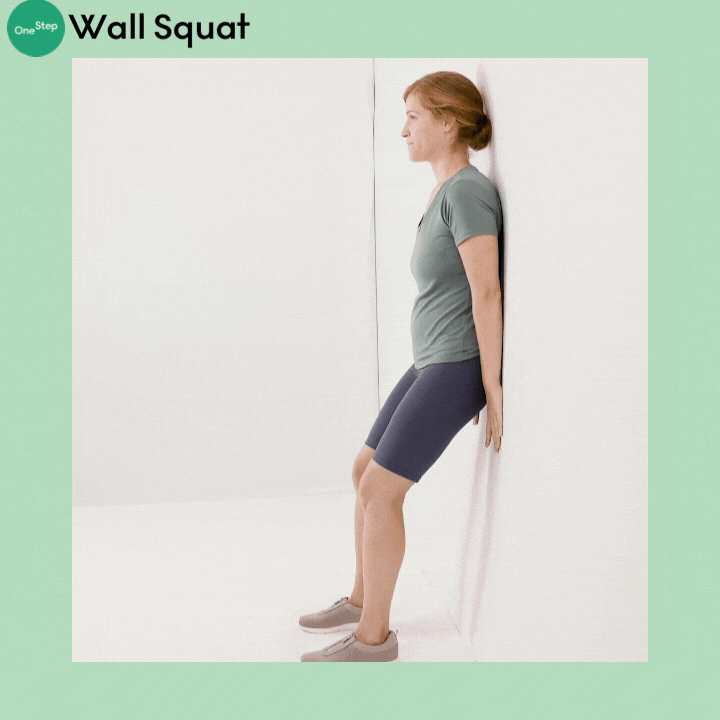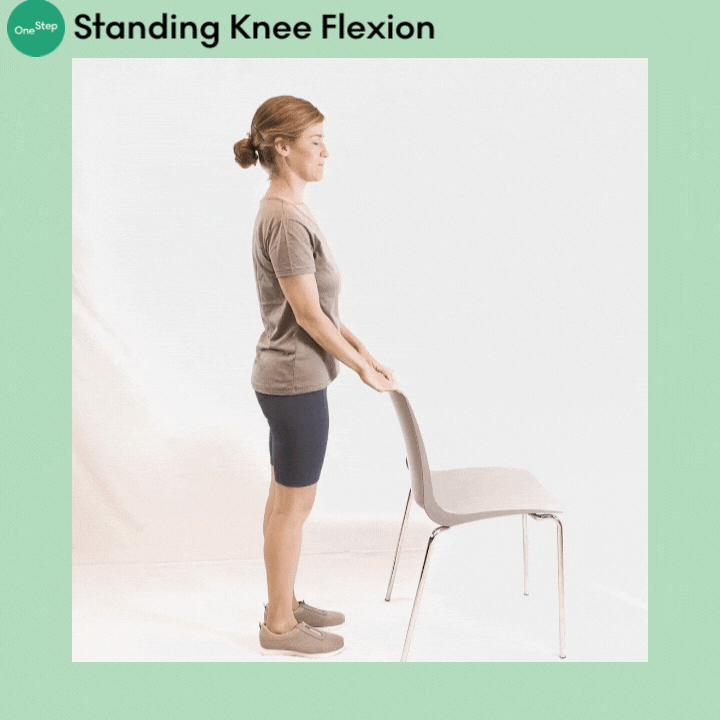
After your operation, you might feel less stable standing on the operated leg. There are three reasons for this feeling:
1: There are two main ligaments deep inside the knee joint; The anterior cruciate ligament (ACL) and posterior cruciate ligament (PCL). The PCL is sometimes spared but may be weakened after surgery while the ACL is completely removed.
2: The new joint surfaces are not the exact replica of your natural knee and may feel wobbly.
3: There is often decreased muscle strength from inactivity beforehand and from the surgery itself.
Of these three factors of joint instability, there is one major factor that we can improve - you guessed it, strengthening! You need to exercise and strengthen two main muscle groups to stabilize your knee. They are the quadriceps and hamstrings! The “quad” group is a set of 4 muscles in the front of the leg that starts at the hip and finally attaches to an area just below the kneecap. These muscles are primarily responsible for extending, or straightening the knee. The hamstrings are a set of 3 muscles that start at your sit bones in your buttocks and attach to the back of your knee. These muscles are primarily responsible for flexing, or bending the knee.
The solution is to strengthen these muscle groups, giving them the ability to take over the role of stabilizing the knee joint. While you start strengthening the muscles from day one after surgery, it is important to continue to advance your exercises as you become stronger.
Seated knee extension with resistance: Sit in a chair with ankle weights on your legs or a resistance band tied around your ankle and then to a sturdy chair leg. Straighten your knee and slowly return to the starting position. Start with enough repetitions to cause muscle fatigue, and once that gets easier increase the weight/resistance.

Wall squats: Start in a standing position with your back against the wall. Bend your knees as if you are going to sit down in a chair and hold this position for at least 15 sec. Perform several repetitions until you feel muscle fatigue. As you get stronger, hold the pose longer.

Bridges: Start by lying on your back with your knees bent. Keep your feet flat on the floor, hip-width apart. Contract your buttocks and lift your hips off the floor towards the ceiling, being careful not to arch the low back. Return to the starting position. Repeat at least 20 times to fatigue. As this gets easier, consider holding a weight on your abdomen for an extra challenge.

Standing knee bends with resistance: Use an ankle weight around your lower leg. Start in a standing position with your hands on a counter or wall. Slowly bend your knee so that your heel comes closer to your buttocks. Return to starting position, being mindful to slowly lower your foot all the way to the floor with control. Perform until fatigued.

Squats: Start in standing with your feet hip-width apart. Squat and bend your knees as far as you comfortably can, keeping your back straight and shoulder slightly forward of your hips. Make sure your weight is transferred to the heels of your feet, not your toes. Return to the standing position. As you become more comfortable with the exercise and improve your strength, start to hold onto weights or kettlebells to amp up the workout!

Deadlifts: Start in a standing position and hold onto a broom in both hands. Keep a slight bend in your knees and hinge from your hips while keeping your spine straight. The broomstick should come to the mid-shin level then rise to a standing position. Perform this exercise for several reps, focusing on contracting your gluteal muscles and not straining the back. As you get comfortable with this exercise, slowly add a little bit of weight. You can swap out the broom for hand weights or wrap ankle weights around the broom!

When it comes to strengthening any muscle, it’s important to advance the exercises as they become easier to perform. You can advance them by increasing the weight or resistance and always working the muscle until it feels fatigued. Exercise may cause mild discomfort, and that is OK! Perform strength training 2-3 days a week with a rest day in between, and you will notice improved strength and stability in your knees!
Looking for more advanced exercises after a total knee replacement? Download the OneStep Digital Physical Therapy app to connect with a licensed PT who can create a customized exercise program for optimal strength gains. Our programs are great for those who recently had a knee replacement and those with an older surgical history looking to continue strengthening and address any lingering concerns.